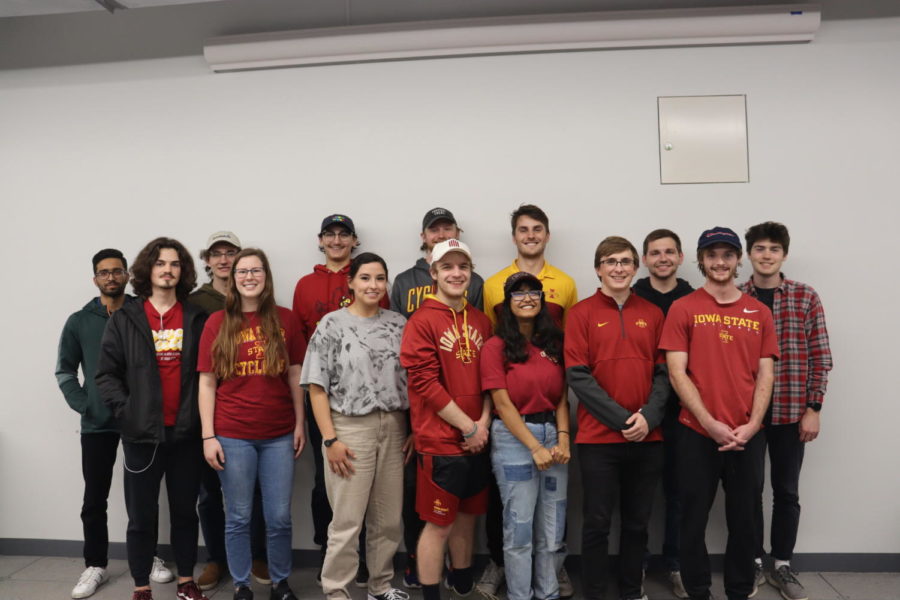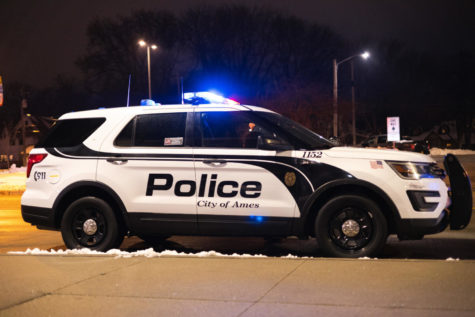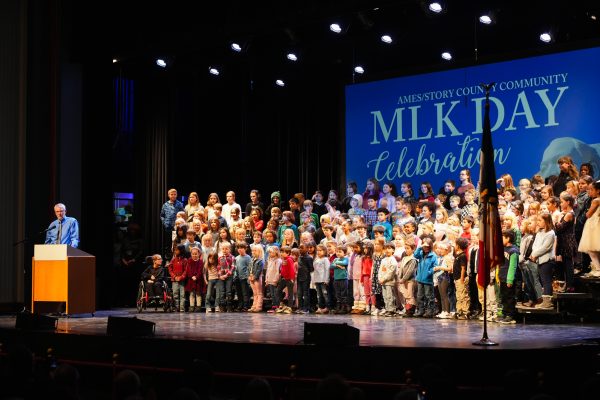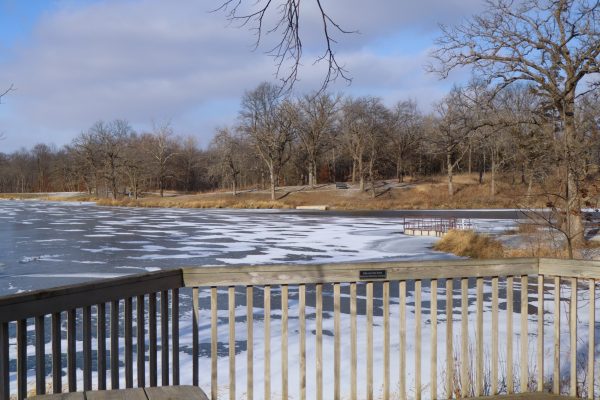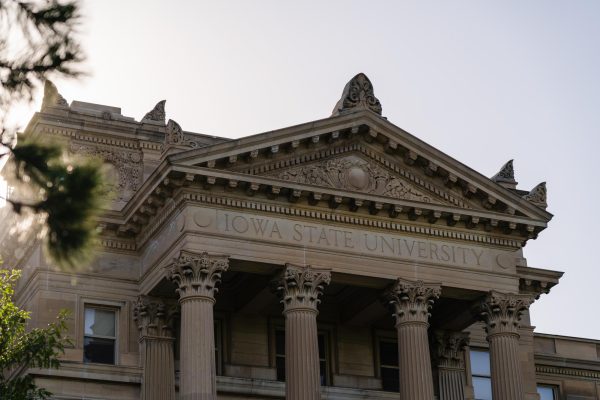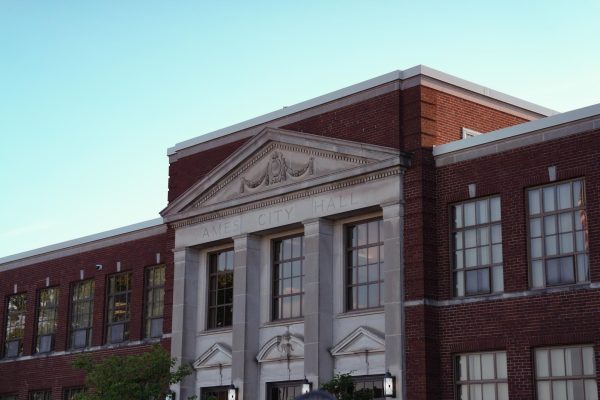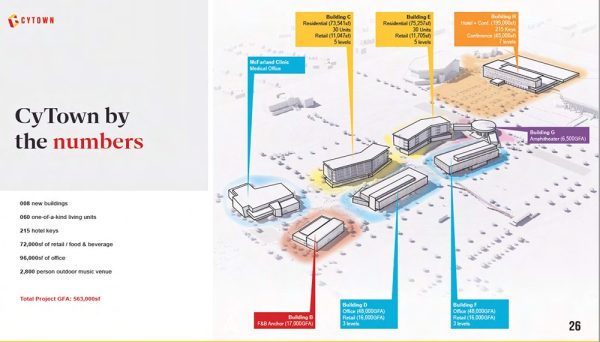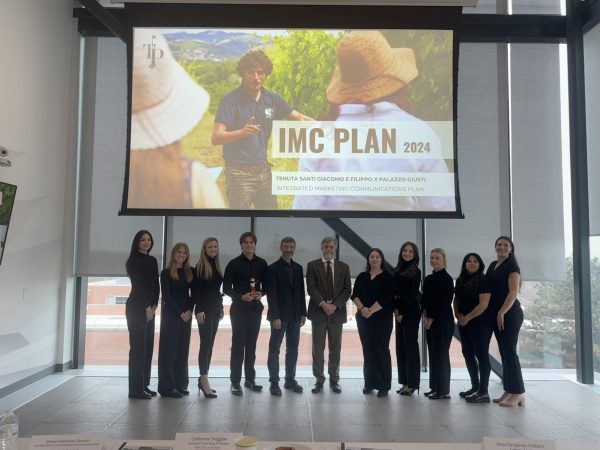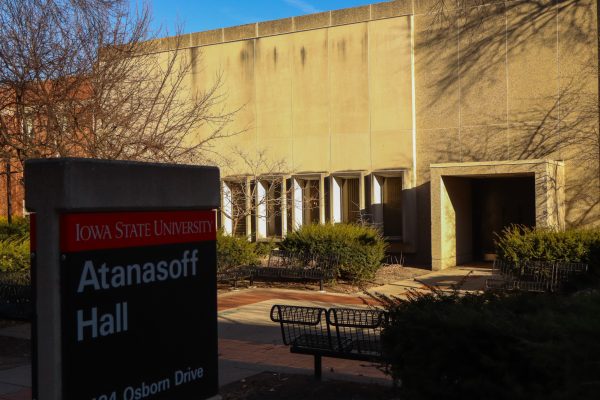Wind energy team promotes sustainability
Iowa State’s wind energy team is taking sustainability to the next level as they move onto phase two of the U.S. Department of Energy’s 2023 Collegiate Wind Competition.
The Wind Energy Student Organization (WESO) promotes wind energy education and collaborative research at both the university and K-12 levels and is open to undergraduate, graduate and professional students.
According to the collegiate wind competition’s phase two announcement, the growing wind energy industry can help meet the Biden Administration’s goal to achieve 100% clean electricity by 2035 and a net-zero-carbon-emissions economy by 2050.
Isaac Twedt-Ball, a senior majoring in mechanical engineering and president of WESO, said the team was chosen as one of 13 teams to compete, design and build a prototype wind turbine.
Twedt-Ball said they are also tasked with designing and building an offshore wind farm, and in phase three, participating in outreach and educational events related to wind energy.
“There’s really three major components to the competition: the wind turbine design, the wind farm design and then there’s the connection creation, which is really the outreach into the competition,” Twedt-Ball said.
Twedt-Ball said the turbine prototyping design is focused on and has the competitors try to get the turbine to produce as much energy as possible and hopefully create a wind tunnel.
“The focus is really just to see all of the aerodynamic components and learn how that works, learn how these electrical systems and wind turbines work and learn how mechanical mechanisms within turbines work,” Twedt-Ball said.
Twedt-Ball said the wind farm design component of the competition has been one of the more interesting parts of the competition.
Craig Bracke, a senior in civil engineering, wind farm development team lead and the WESO secretary– explained the three components of the competition further.
Bracke said phase one included wind farm development, where the team designed a hypothetical wind farm located offshore in the Gulf of Mexico. He said the second phase was the competition’s main challenge and involved more hands-on work.
“The second phase is a turbine development and design and testing competition, so that’s where we actually get to build a wind turbine, and it’s a small scale [turbine], about three feet tall,” Bracke said.
Bracke said the team will then place this design into a wind tunnel to test the power output. He said this part of the competition is what catches people’s attention the most and prompts others to join the club.
Bracke said the third phase of the competition would be an outreach and connection task where the team will connect with local schools and ISU students to educate them on wind energy and potential job opportunities they can pursue in the field of energy.
“The third phase is a connection creation contest, where we reach out to local middle schools, high schools as well as even Iowa State students, educate them on wind energy and open their eyes up to those other potential sources of energy,” Bracke said.
Bracke said the competition and club allow participants to work as a team and learn more about wind energy. He said his part of the team is collaborative, involving diverse majors and minds.
“It’s very diverse in terms of majors […] so we all kind of bring our brains together and work out like the financial analysis of the project,” Bracke said.
Bracke said the team reflects on different environmental considerations that go into the ultimate design and execution of the project. He said the team also discusses how the project can mitigate environmental risks associated with the competition and learn about different facets of the project.
According to the U.S. Energy Information Administration, environmental considerations for wind turbines may include combustible materials, blade noise and animal injuries.
Bracke said another benefit of participating in the competition is networking with field professionals and learning more about what to expect after graduation.
“It’s a very good experience there, and the competition allows us to make a lot of connections with industry professionals,” Bracke said.
Drew Jensen, a junior in electrical engineering and WESO’s treasurer, said working with people of different backgrounds has been a unique and rewarding experience.
Jensen said he enjoys collaborating with different majors ranging from different types of engineering to biology to design, adding that he became interested in his major and the competition because of his passion for helping fix climate change.
“Climate change is the biggest problem facing the world today, and I think one of the huge ways that we can go about solving it is by fixing our energy crisis,” Jensen said. “I mean, [nonrenewable energy sources] are not going to last forever and are actively destroying our planet.”
Jensen said his biggest challenge so far has been working with the university to obtain the grants needed to pursue the competition.
“Getting the grants from Iowa State has been kind of more difficult than we were expecting because normally clubs are either accepting private outside donations or are accepting outside grants most of the time, and as treasure, I’ve had to deal with a lot of [financial obstacles],” Jensen said.
Jensen said it was a mess attempting to obtain funding from the university and the competition organizers. He said it has been difficult to work within the confines of different departments’ regulations and obtain the materials needed to succeed.
“It’s been a difficulty trying to work within the systems, [and] also trying to do our own thing, along with the fact that, you know, designing a windmill is not an easy task to begin with,” Jensen said.
Jensen said he encourages students to get involved with the club as the experience has been rewarding for him. He said the hands-on work gave him experience working with a team and building something significant.
“Joining the club, it’s fun, it’s a cool experience, and we need people right now,” Jensen said. “Anybody that thinks they’re talented with coding or, you know, knows how to use really any sort of tool that can manufacture this kind of thing, or if not, we probably have a place for you somewhere.”
Sri Sritharan, a distinguished professor of civil, construction, and environmental engineering and the adviser of WESO, said the competition and club allow students of different backgrounds to work together toward a common goal.
“The competition] provides opportunities for folks with different expertise [and] knowledge to come together and build on each other from a knowledge base,” Sritharan said.
Sritharan said the team’s design and report were well structured according to feedback from a National Renewable Energy Lab program integrator. He said the program praised the team for the design’s prevailing wind direction.
“This competition provides students an opportunity to experience a real-world challenge, and it is [their] greatest interest, stepping up and taking part in a competition like that,” Sritharan said.
Your donation will support the student journalists of the Iowa State Daily. Your contribution will allow us to purchase equipment, send our student journalists to conferences and off-set their cost of living so they can continue to do best-in-the-nation work at the Iowa State Daily.


